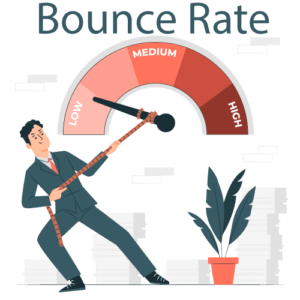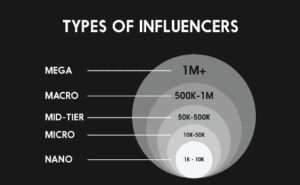
In the competitive landscape of digital marketing, having an SEO-friendly website is crucial for achieving high visibility in search engine results pages (SERPs). But what exactly does it mean for a website to be SEO-friendly? This comprehensive guide will explore the core elements and practices that define an SEO-friendly website, including site structure, content optimization, technical SEO, user experience, and ongoing maintenance.
Understanding SEO and Its Importance
Search Engine Optimization (SEO) refers to the process of enhancing a website to improve its visibility in search engines like Google, Bing, and Yahoo. SEO involves optimizing various elements of a website to make it more attractive to search engine algorithms and more useful to users. The ultimate goal is to achieve higher rankings for relevant keywords and phrases, drive organic traffic, and provide a better user experience.
An SEO-friendly website is one that adheres to best practices and guidelines set by search engines to ensure that its content is easily discoverable and indexable. This involves a combination of on-page, off-page, and technical SEO strategies.
Key Elements of an SEO-Friendly Website
1. Effective Site Structure
A well-organized site structure is fundamental to SEO. It involves arranging content in a logical hierarchy that makes it easy for both users and search engines to navigate.
1.1. Clear Navigation
- Importance: Clear and intuitive navigation helps users find relevant content quickly, improving their experience and increasing the likelihood of engagement.
- Best Practices: Use descriptive menu labels, maintain a simple and consistent navigation system, and ensure that key pages are easily accessible from the homepage.
1.2. URL Structure
- Importance: Search engines use URLs to understand the context of a page. A clean and descriptive URL structure can improve crawling and indexing.
- Best Practices: Use short, descriptive URLs that include relevant keywords. Avoid using long strings of numbers or irrelevant characters. For example, use
example.com/seo-friendly-tipsinstead ofexample.com/post123456.
1.3. Internal Linking
- Importance: Internal links help distribute page authority throughout the site and guide users to related content. They also assist search engines in crawling and indexing your site.
- Best Practices: Create a logical internal linking strategy with contextual links that point to related content. Use descriptive anchor text that provides context about the linked page.
2. Quality Content
Content is king in SEO. High-quality, relevant content is essential for attracting and retaining visitors while satisfying search engine algorithms.
2.1. Keyword Research and Optimization
- Importance: Keywords are the terms users type into search engines to find information. Properly optimized content with relevant keywords can help your site rank higher in search results.
- Best Practices: Conduct thorough keyword research to identify relevant terms and phrases. Incorporate primary keywords naturally into titles, headings, and body text. Avoid keyword stuffing, which can negatively impact readability and SEO.
2.2. Content Relevance and Value
- Importance: Providing valuable, relevant content that meets user intent is critical for engagement and conversions.
- Best Practices: Focus on creating content that answers users’ questions, solves problems, or provides useful information. Use a mix of text, images, videos, and infographics to enhance content value.
2.3. Regular Updates
- Importance: Fresh, updated content signals to search engines that your site is active and relevant.
- Best Practices: Regularly update your content to reflect the latest information and trends. This can include adding new blog posts, updating old articles, or refreshing product descriptions.
3. Technical SEO
Technical SEO involves optimizing the technical aspects of a website to ensure that search engines can crawl, index, and render it effectively.
3.1. Mobile-Friendliness
- Importance: With the increasing use of mobile devices, search engines prioritize mobile-friendly websites. Mobile-friendliness is a key ranking factor.
- Best Practices: Implement responsive design to ensure that your site adapts to various screen sizes. Test your site’s mobile usability using tools like Google’s Mobile-Friendly Test.
3.2. Site Speed
- Importance: Page load speed affects user experience and search rankings. Slow-loading pages can lead to higher bounce rates and lower rankings.
- Best Practices: Optimize images, leverage browser caching, use a Content Delivery Network (CDN), and minimize code (HTML, CSS, JavaScript) to improve page speed. Use tools like Google PageSpeed Insights to analyze and enhance site performance.
3.3. Secure Sockets Layer (SSL)
- Importance: SSL certificates encrypt data transferred between users and your website, enhancing security. Search engines consider HTTPS as a ranking factor.
- Best Practices: Ensure that your site uses HTTPS by installing an SSL certificate. Look for the padlock icon in the browser’s address bar to verify the site’s security.
3.4. XML Sitemap
- Importance: An XML sitemap helps search engines discover and index all the pages on your site. It provides a roadmap of your website’s structure.
- Best Practices: Create and submit an XML sitemap to search engines via Google Search Console or Bing Webmaster Tools. Update the sitemap regularly as new content is added.
3.5. Robots.txt File
- Importance: The robots.txt file instructs search engine crawlers on which pages to crawl and index. It helps manage crawl budget and prevent indexing of low-value or duplicate pages.
- Best Practices: Create a robots.txt file that includes directives for search engine bots. Ensure it doesn’t block important pages or resources.
4. On-Page SEO
On-page SEO refers to optimizing individual web pages to rank higher and attract relevant traffic.
4.1. Title Tags
- Importance: Title tags are displayed as the clickable headline in search results and are a critical ranking factor.
- Best Practices: Craft unique and descriptive title tags for each page. Include primary keywords, keep it under 60 characters, and make it compelling to encourage clicks.
4.2. Meta Descriptions
- Importance: Meta descriptions provide a summary of a page’s content and appear below the title tag in search results. They influence CTR and can impact rankings indirectly.
- Best Practices: Write engaging meta descriptions that include relevant keywords and accurately reflect the page content. Keep descriptions under 160 characters.
4.3. Heading Tags (H1, H2, H3, etc.)
- Importance: Heading tags help structure content and make it easier for users and search engines to understand the main topics and subtopics of a page.
- Best Practices: Use H1 tags for the main page title and H2, H3, etc., for subheadings. Include relevant keywords and ensure a logical hierarchy.
4.4. Image Optimization
- Importance: Images enhance content but can slow down page speed if not optimized. Proper image optimization improves loading times and accessibility.
- Best Practices: Use descriptive file names and alt attributes for images. Compress images to reduce file size without sacrificing quality. Implement responsive images for different devices.
4.5. Content Formatting
- Importance: Well-formatted content improves readability and user engagement. It also helps search engines understand the context of your content.
- Best Practices: Use bullet points, numbered lists, and short paragraphs to break up text. Incorporate relevant keywords naturally and use multimedia elements to enrich content.
5. User Experience (UX)
User experience encompasses all aspects of how users interact with a website. A positive UX contributes to higher engagement, lower bounce rates, and better SEO performance.
5.1. Mobile Responsiveness
- Importance: With the rise of mobile internet usage, ensuring a site is mobile-friendly is crucial for user experience and SEO.
- Best Practices: Design a responsive site that adapts to various devices and screen sizes. Test your site on different devices to ensure a consistent experience.
5.2. Easy Navigation
- Importance: User-friendly navigation helps visitors find the information they need quickly and easily, leading to higher satisfaction and engagement.
- Best Practices: Use a clear and logical navigation menu, provide search functionality, and ensure that important pages are accessible from any part of the site.
5.3. Readability
- Importance: Content that is easy to read and understand improves user experience and encourages visitors to stay longer on your site.
- Best Practices: Use a legible font size and style, maintain a good contrast between text and background, and ensure that content is well-organized and free of jargon.
5.4. Clear Calls to Action (CTAs)
- Importance: Effective CTAs guide users towards desired actions, such as making a purchase, signing up for a newsletter, or contacting you.
- Best Practices: Place CTAs prominently, use compelling and action-oriented language, and make sure they stand out visually.
6. Off-Page SEO
Off-page SEO refers to activities that occur outside your website but impact your search engine rankings and online presence.
6.1. Link Building
- Importance: High-quality backlinks from authoritative sites signal to search engines that your content is valuable and trustworthy.
- Best Practices: Focus on acquiring backlinks from reputable sources through strategies such as guest blogging, influencer outreach, and content promotion. Avoid black-hat tactics like link schemes.
6.2. Social Media Engagement
- Importance: Social media presence can drive traffic to your site and increase brand awareness. While social signals are not a direct ranking factor, they contribute to overall SEO efforts.
- Best Practices: Maintain an active social media presence, share valuable content, and engage with your audience to build relationships and drive traffic to your site.
6.3. Online Reputation Management
- Importance: Positive reviews and a strong online reputation can enhance trust and credibility, influencing both user behavior and search rankings.
- Best Practices: Encourage satisfied customers to leave reviews, respond to feedback, and manage your online reputation proactively.
7. Ongoing Maintenance and Monitoring
An SEO-friendly website requires continuous monitoring and updates to stay competitive and effective.
7.1. Performance Tracking
- Importance: Regularly monitoring site performance helps identify issues and opportunities for improvement.
- Best Practices: Use tools like Google Analytics and Google Search Console to track metrics such as traffic, bounce rate, and search rankings. Analyze data to make informed decisions.
7.2. SEO Audits
- Importance: Conducting periodic SEO audits helps ensure that your site adheres to best practices and identifies areas for improvement.
- Best Practices: Perform comprehensive audits to evaluate site structure, content quality, technical SEO, and compliance with current SEO standards.
7.3. Staying Updated with SEO Trends
- Importance: SEO is an ever-evolving field, and staying updated with the latest trends and algorithm changes is crucial for maintaining a competitive edge.
- Best Practices: Follow industry blogs, attend webinars, and participate in SEO forums to stay informed about the latest developments and best practices.
Conclusion
An SEO-friendly website is a well-rounded entity that combines effective site structure, high-quality content, technical optimization, and a focus on user experience. By implementing the best practices outlined above, you can enhance your website’s visibility in search engine results, drive more organic traffic, and provide a better experience for your visitors.
Remember that SEO is not a one-time effort but an ongoing process. Regularly update and optimize your site, monitor performance, and adapt to changes in search engine algorithms and user behavior. By staying committed to these practices, you can achieve long-term success and maintain a strong online presence.

















































